Pasture field trials help graziers manage dieback, rundown, pasture establishment and Indian Couch invasion
written by Kylie Hopkins, Central Queensland Sown Pasture team, Department of Agriculture and Fisheries
How many issues can one paddock have?
And if it has many, what can you do about it?
The central Queensland pasture team from the Department of Agriculture and Fisheries held two field days in March at Moura and Middlemount at trial sites, funded in partnership with Meat & Livestock Australia, which aim to answer these questions.
Forty-three people attended the field days with 96% of attendees saying they learnt something new.
Over 84% of people said they intended to make a change after attending the field days and nearly all comments centred around planting new and diverse pastures with legumes and grasses.
So what did the field days cover and what are the key findings from the first few years of data collection?
Wonga | Gundabah
Moura pasture dieback trial site hosted by Warren Luhrs of Ridgedale and Wonga
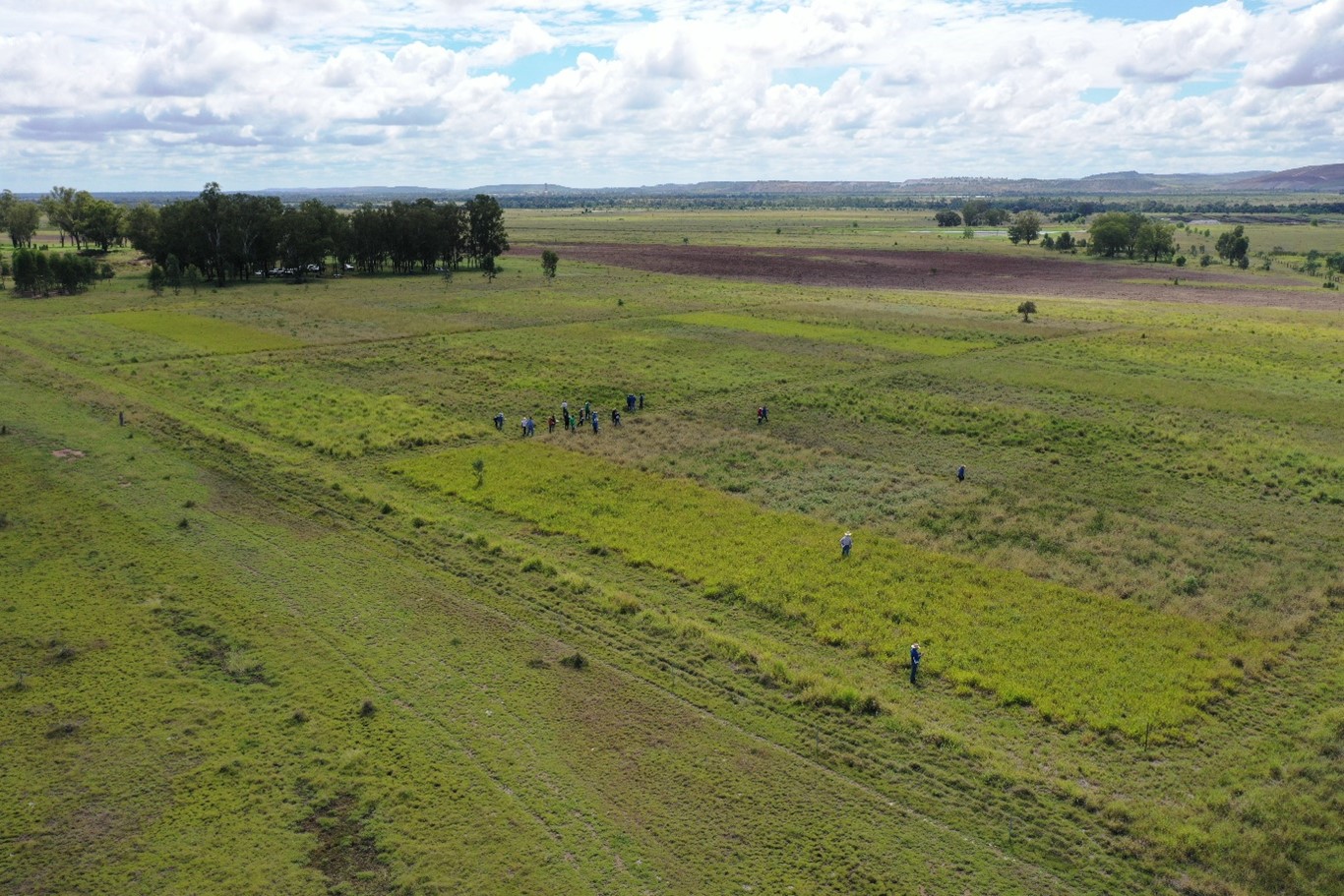
Wonga trial site (near Moura) — Key messages from year one:
- Reliable pasture establishment occurs by fallowing to store soil-moisture, preparing a seedbed, fertilising if required, choosing high quality (germination) seed and sowing at a robust rate then rolling in.
- All grasses have performed well but Sabi, Signal and Strickland finger grasses are the highest yielding to date.
- Indian couch and legumes are low yielding due to dominance of sown grasses.
- Stylo is the highest yielding legume, followed by atro
- Pasture dieback reoccurred about 18 months after sowing but it is only affecting Sabi grass, which is consistent with observations of Sabi grasses around eastern Queensland
Site challenges and opportunities at Wonga
The trial paddock at Wonga has had a variety of pasture issues over the years due to the management of previous owners. After a history of grain farming, the paddock was returned to buffel grass. High pasture utilisation combined with a decline in soil plant available nitrogen resulted in extensive Indian couch invasion and finally in 2016 buffel grass started to die when pasture dieback showed up.
You can read more about Warren’s pasture journey on page 28 of the Autumn 2023 MLA Feedback magazine here.
The paddock at Wonga was therefore the perfect site to investigate management of pasture rundown, Indian couch invasion and pasture dieback through the establishment of a new legume and grass pasture.
Furthermore, recent work conducted by the North Queensland pasture team, lead by Kendrick Cox, had identified several grass and legume lines that showed promise for planting in central Queensland’s seasonal conditions and soil types.
“This paddock at Wonga presented the perfect opportunity to trial the productivity of these varieties in CQ, whilst also assessing their tolerance to pasture dieback,” said Kendrick.
“Kendrick and the northern pasture team helped us plan and plant the site in 2021 and we have been sharing the results of the trial plots as they really help us understand a variety of pasture issues,” said Stuart Buck, who lead’s DAF’s pasture dieback program. “Kendrick was an integral part of our field day as he could describe the background research involved in testing these grass and legume options and also talk about their performance in other parts of Queensland. His contribution was valued by everyone who attended.”
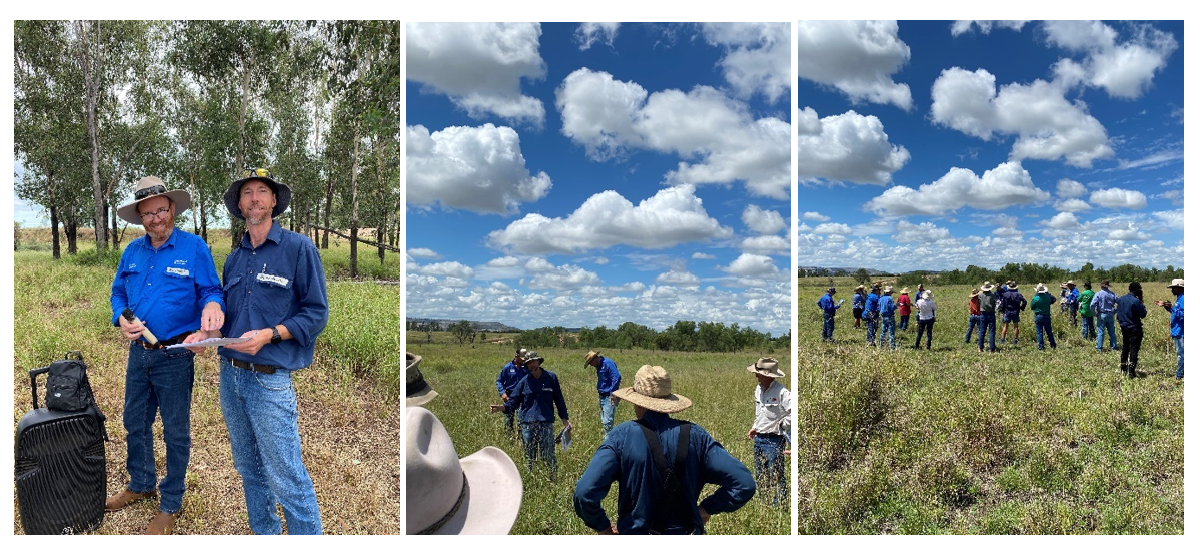
Wonga trial design and observations
This trial site contains 50 combinations of grass and legume species, planted in a replicated, randomised block design. Stuart says the design of the site is important to produce sound scientific conclusions from the data collected.
| Type | Common name | Scientific name |
|---|---|---|
| Grass | Rhodes grass | Chloris gayana cv. Sabre |
| Panic | Megathyrsus maximus cv. G2; Gatton | |
| Indian couch | Bothrichloa pertusa cv. Keppel | |
| Hybrid panic | Megathyrsus maximus X M. infestus cv. Massi; C1 | |
| Green coloratum | Panicum coloratum var. coloratum cv. under commercialisation | |
| Buffel grass | Cenchrus ciliaris cv. Gayndah | |
| Finger grass | Digitaria milanjiana cv. Strickland | |
| Sabi grass | Urochloa mosambicensis cv. under commercialisation | |
| Signal grass | Urochloa decumens cv. Basilisk | |
| Creeping bluegrass | Bothriochloa insculpta cv. Bisset | |
| Legume | Desmanthus | Desmanthus virgatus cv. Progardes |
| Atro | Macroptilium atropurpureum cv. Aztec; Emu foot atro (under commercialisation) | |
| Butterfly pea | Clitoria ternatea cv. Milgarra | |
| Stylo | Stylosanthes spp. cvv. Seca, Verano, Primar and Unica | |
| No legume | ||
DAF pasture scientist, Paul Jones from Emerald, has been heavily involved in the data collection and analysis of results. Paul says, “Results from the first year of data collection (2022) demonstrate that all plots have been high yielding, producing 3,500 – 9,000 kg of dry matter per hectare. The plots with Sabi, Basilisk and Stickland in particular, have produced over 5,000 kg consistently.”
“In this first year we have seen the grass really outcompeting the legumes they were sown with, so it will be interesting to see how and if that changes next year,” said Kendrick. “We certainly see the legume and grass population change over time in our other trial sites as animals show grazing preferences and grasses and legumes tolerate the pressure differently.”
The Wonga trial plot has been grazed twice since establishment in 2021 and another is planned soon.
“The sown grasses have also really outcompeted Indian couch. Indian couch was dominant in the trial site before the plots were sown,” reflected Stuart. “We took a lot of care to use reliable pasture establishment techniques to make sure we had a good strike of sown grasses and legumes to combat germinating Indian couch from the soil-seedbank. The trial site was cultivated four times, fertilised, and then planted with a robust rate of high-quality seed. The results demonstrate spending time and money produced a very good establishment.”
So far the stylo treatment is the best performing legume at this site. The stylo plots were sown with a mixture of cultivars including Seca, Verano, Primar and Unica. Seca has performed the best of these so far. There are also promising results from the Atro legume treatment, specifically the emu foot leaf shape type.
“The atro with the emu foot leaf shape has been very promising in our other trials in north Queensland,” says Kendrick. “It is drought hardy, palatable, late flowering and produces lots of vegetative growth.”
The return of dieback
Despite the good establishment at Wonga, the high grass yields and productive legumes, the question lingering on the pasture team’s mind has been about whether dieback would affect this site again after the new pasture establishment.
“Dieback is back,” says Stuart.
“We have seen in the 2022-23 summer that the Sabi grass plots have been heavily affected by dieback, there is a lot of dead grass in these plots. Because we have sown 10 different grasses at one location at the same time, the presence of dieback in one specific grass type clearly demonstrates a range in susceptibility of grasses to dieback. Also, due to the grass dying out the legumes are responding, particularly the atro with the emu foot leaf shape. This reinforces our key messages about having a diverse pasture made up of grass and legume species. If the grass dies out, legumes will play a key role in providing feed for your cattle.”
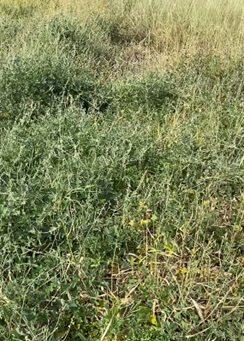
Middlemount pasture dieback trial site hosted by John Baker of Booroondarra and Gundabah
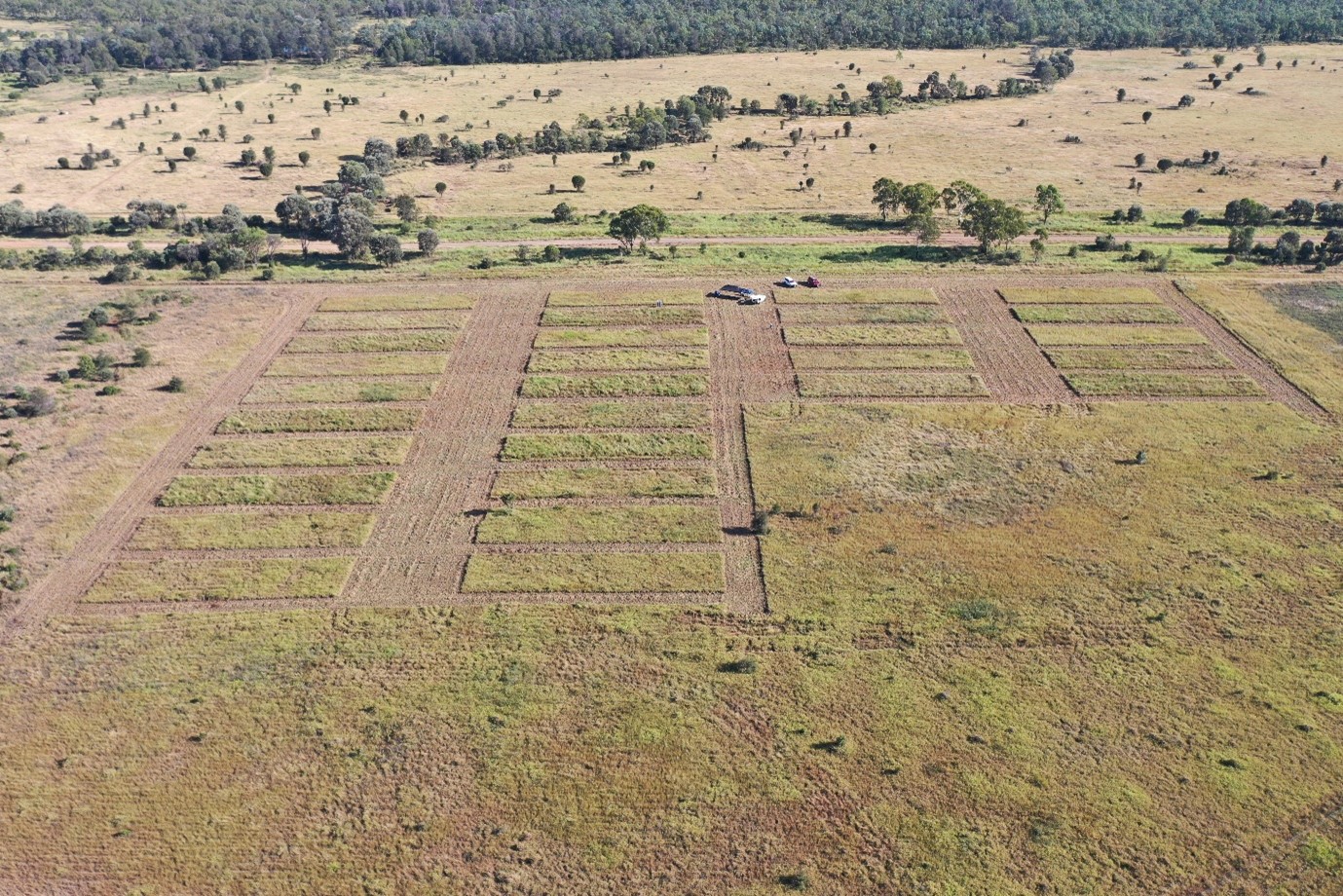
Gundabah trial site (near Middlemount) — Key messages from year two:
- Reliable pasture establishment occurs by fallowing to store soil-moisture, preparing a seedbed, fertilising if required, choosing high quality (germination) seed and sowing at a robust rate then rolling seed in.
- Legumes have done well, especially Caatinga stylo (high seed quality, well suited to the soil type).
- Despite pasture dieback present prior to the trial, no significant level of pasture dieback has occurred since.
- Fertilising the pasture has resulted in the highest pasture yield to date.
- Some treatments have significantly reduced the amount of Indian Couch in the pasture.
- Removing the existing pasture and seeding with grass and legume mixture has been highly successful, and has provided the highest reduction in Indian Couch.
- Spraying pesticides have not improved pasture growth.
Site challenges and opportunities at Gundabah
John’s paddock at Gundabah, Middlemount, was dominated by Gayndah buffel after being cropped for a few years in the mid 70s. Since then the paddock has slowly become increasingly affected by pasture run down, which is common in grass-dominated paddocks. Plant available nitrogen in the soil becomes tied up over time and as a result, grasses like buffel, which have a high fertility demand, become less productive. Ripping was conducted in about 2005 to help renovate the pasture. Indian Couch was increasing in the buffel pasture but then quickly expanded when pasture dieback occurred in 2017.
Gundabah trial design and observations
“When we were planning this trial site, we discussed a lot of treatment options with John and came up with a list that we thought would help us understand management options for dieback, rundown and Indian Couch.” said Stuart.
“At the time, we were still unsure which pathogens might be involved in dieback, so we included a couple of pesticide treatments (fungicide and insecticide) to see what these might do. We also included planting a break crop before going back to pasture to see if this would break the disease cycle. A high rate of fertiliser was also added as a treatment to see if high nutrient supply, especially nitrogen, would encourage pathogens and/or change the grass species composition. Our other treatments were to compare different ways to establish a new mixed legume and grass pasture.”
| Treatment number | Treatment detail |
|---|---|
| 1 | Control (untouched) |
| 2 | Fungicide* – Propriconazole - Bumper® (one application) |
| 3 | Fungicide* – Azoxystrobin (one application) |
| 4 | Cultivate once, fertilise NPKS mix (urea and CK88®) at 370kg/ha |
| 5 | Cultivate once, fertilise NPKS mix (urea and CK88®) at 370kg/ha, plant grass/legume mix |
| 6 | Cultivate twice, fertilise NPKS mix (urea and CK88®) at 370kg/ha, plant grass/legume mix |
| 7 | Cultivate twice, fertilise with 210 kg/ha Granulock starter Z®, plant oats, plant Gayndah buffel |
| 8 | Spray Roundup® twice, fertilise NPKS mix (urea and CK88®) at 370kg/ha, plant grass/legume mix |
| 9 | Insecticide* – Movento® (2 applications, 14 days apart) |
| 10 | Fertilise annually – broadcast NPKS mix (urea and CK88®) at 370kg/ha |
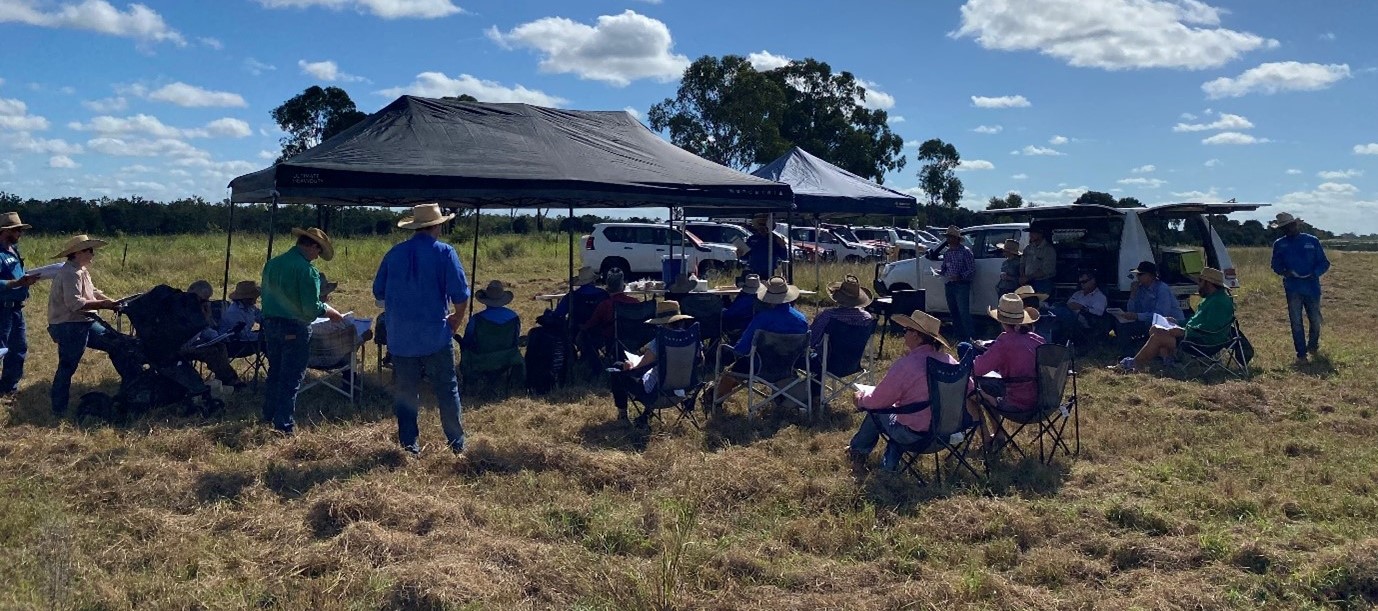
The results after two years provide an interesting insight into several issues.
“We have seen no difference between the yield of the control plots compared to those sprayed with fungicide or insecticide, indicating pathogens were not restricting pasture growth,” says Paul. “However the fertilised plots are the real standout with the highest yield – over 60% higher yielding than the control plots.”
The fertilised plots have been given a high annual application of a nitrogen, phosphorus, potassium and sulphur mix (see table for fertiliser type and rates).
“This is a high rate, we know,” said Stuart.
“But, it really demonstrates how rundown this soil is. We know this application rate is probably not commercially viable, but it does demonstrate how well the pasture responds to nutrition. If we can fertilise the soil with nitrogen over the long term via legumes, we could possibly achieve these yields in our replanted pasture plots.”
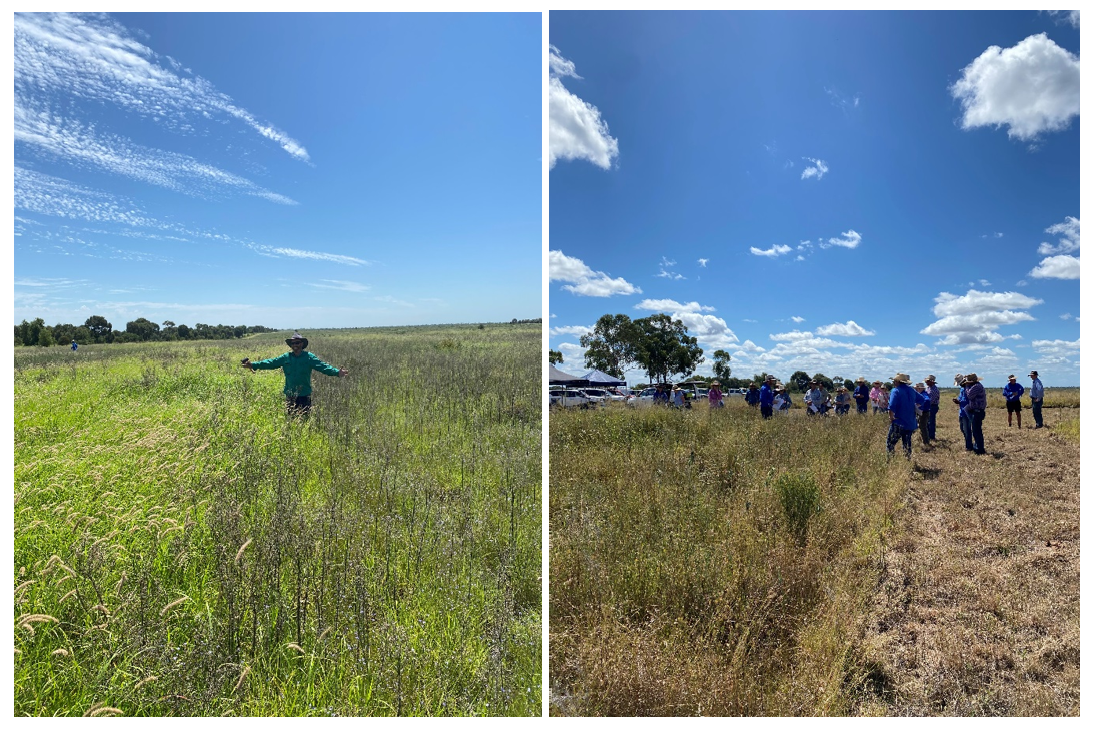
Before the treatments were started in January 2021, the biomass yield in all plots were measured in October 2020. “At this time the pasture yield was 1,600 kg of dry matter per hectare on average, and 64% of the dry matter was Indian Couch,” said Paul. “The exciting outcome was that by 2022 the new pasture contained less than 14% Indian Couch.”
Stuart says there is a great message here for the management of pastures with high Indian Couch populations.
“Whilst the new pasture plots are only one season post-establishment, the establishment method of fallowing by cultivation or spraying, fertilising, sowing good quality seed and then rolling the seed in, has produced excellent results. Not only is there a small amount of Indian Couch in these treatments, but about a third of the biomass is legume. This is great news from a cattle nutrition and soil health perspective.”
The new pasture plots (treatments 5, 6 and 7) were all resown with a grass and legume mix that included Purple pigeon, Gayndah buffel, Epica Rhodes, Gatton Panic, Bisset creeping blue, Premier Digit, Caatinga stylo and Progardes desmanthus. Despite this diversity, Rhodes and Gayndah buffel are the dominant grasses and Seca and Caatinga are the dominant legumes.
Stuart says seed quality and suitability to soil type really played a role in the establishment of some species. “We had a lot of trouble getting high quality Premier Digit seed and we increased our seeding rate to try and account for it but it really is hard to compete with something like buffel or Rhodes with high quality seed.”
For more information on pasture dieback, watch our three short videos on identification, management and a producer’s experience here.
Maybe you prefer to listen? We’ve recorded a podcast too!
If you want to read a little summary of where we are at in our understanding of how to manage pasture dieback, have a read of this article on management options.